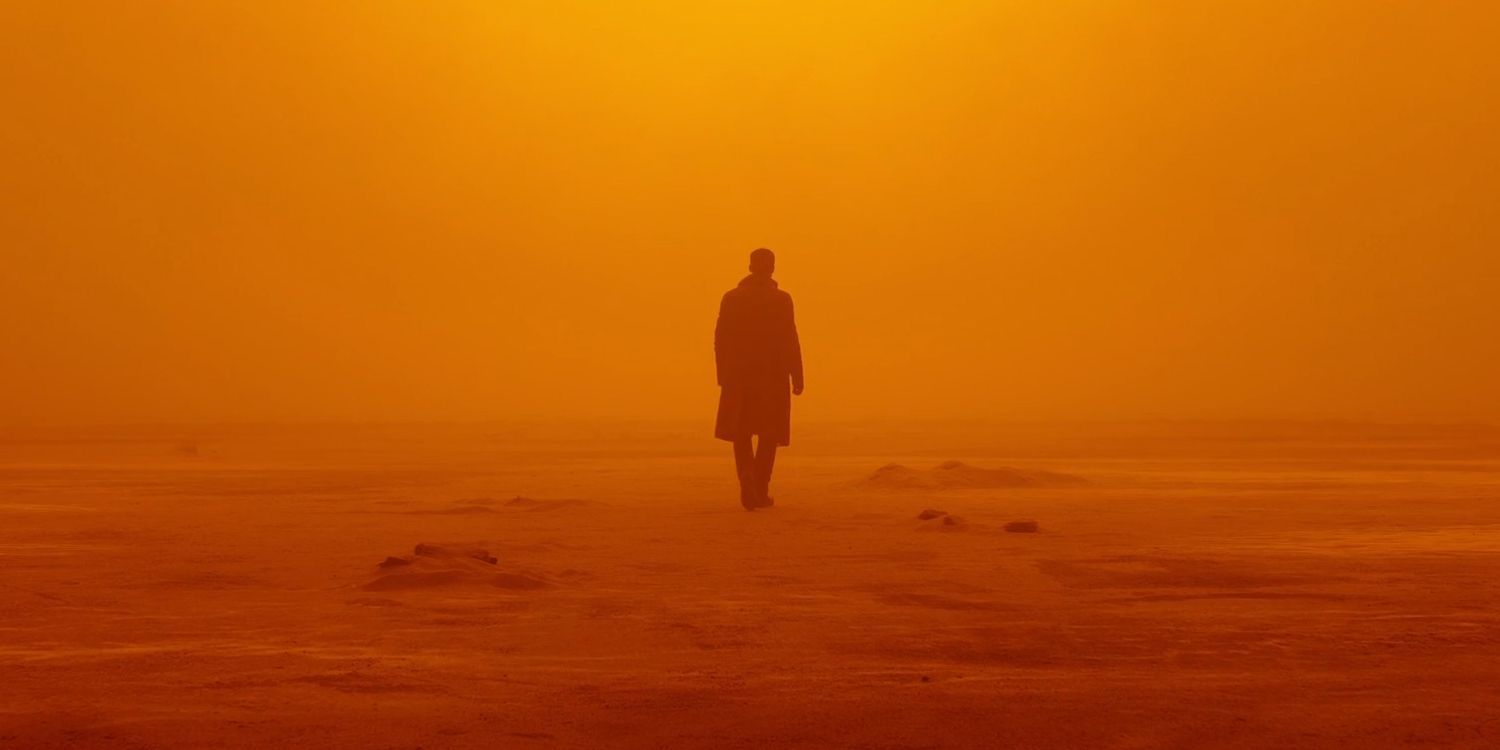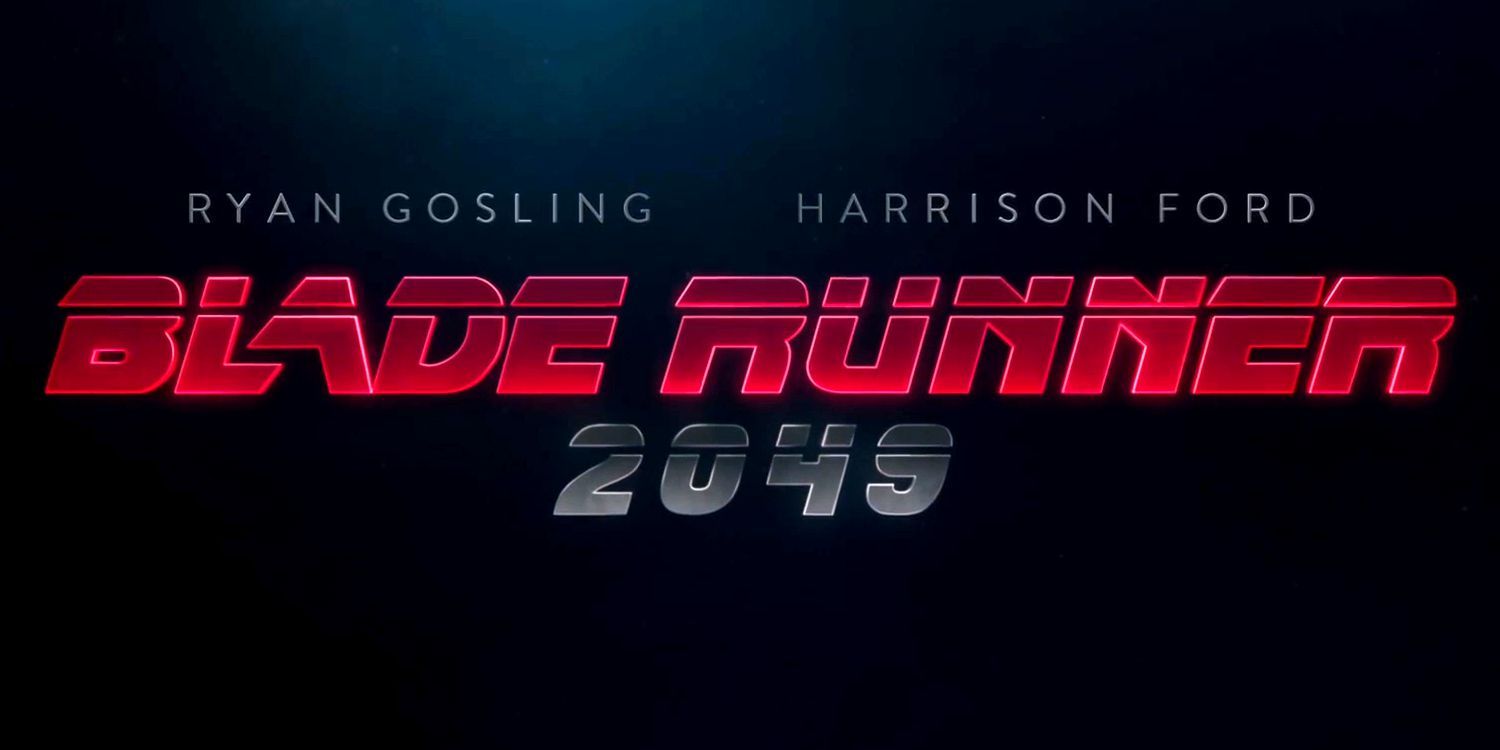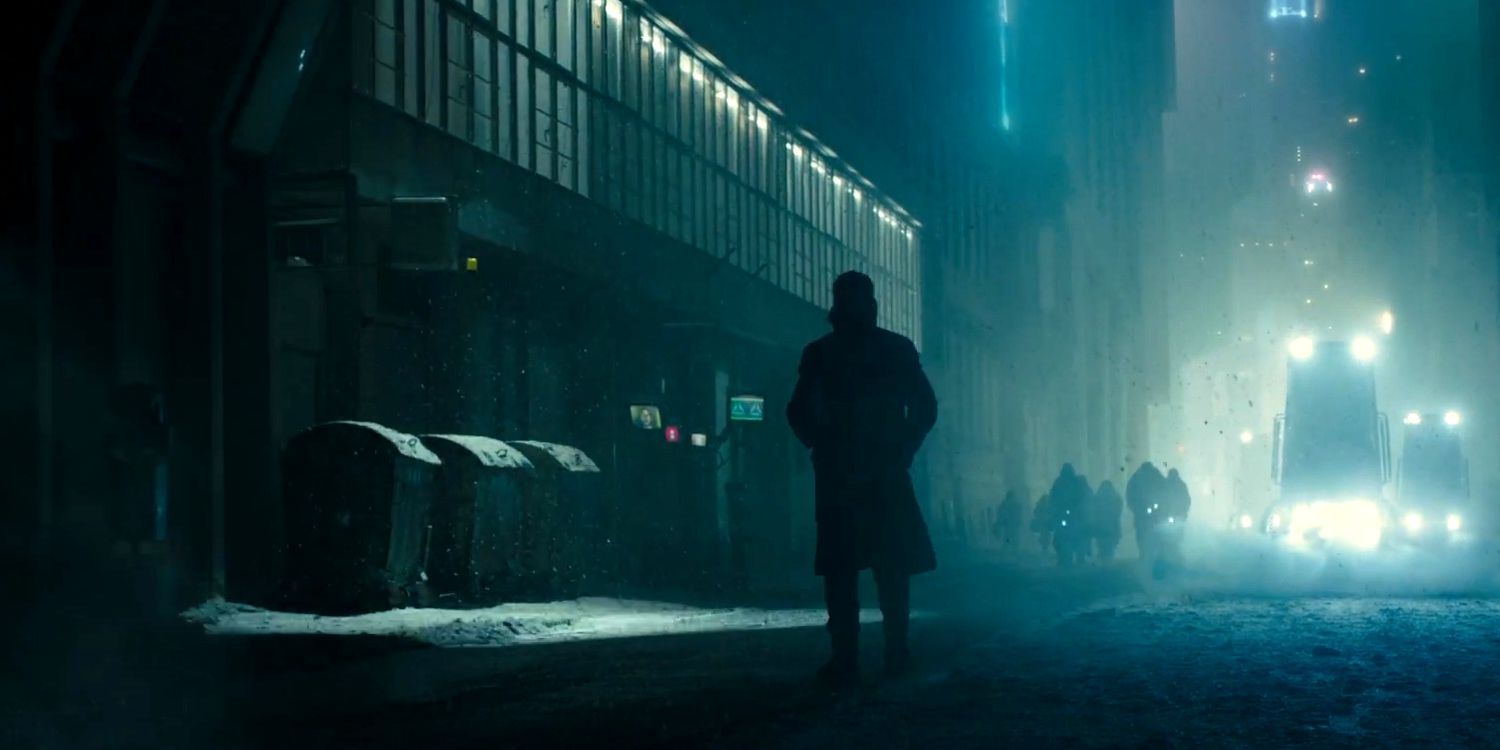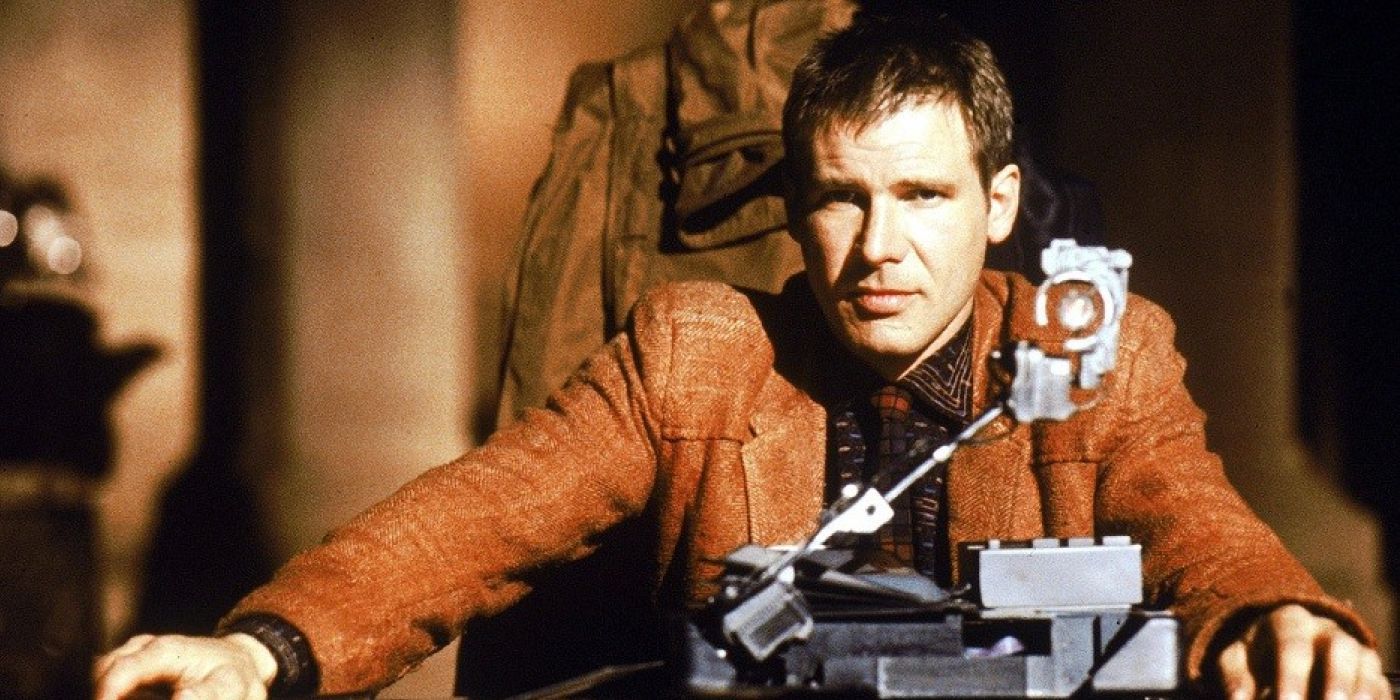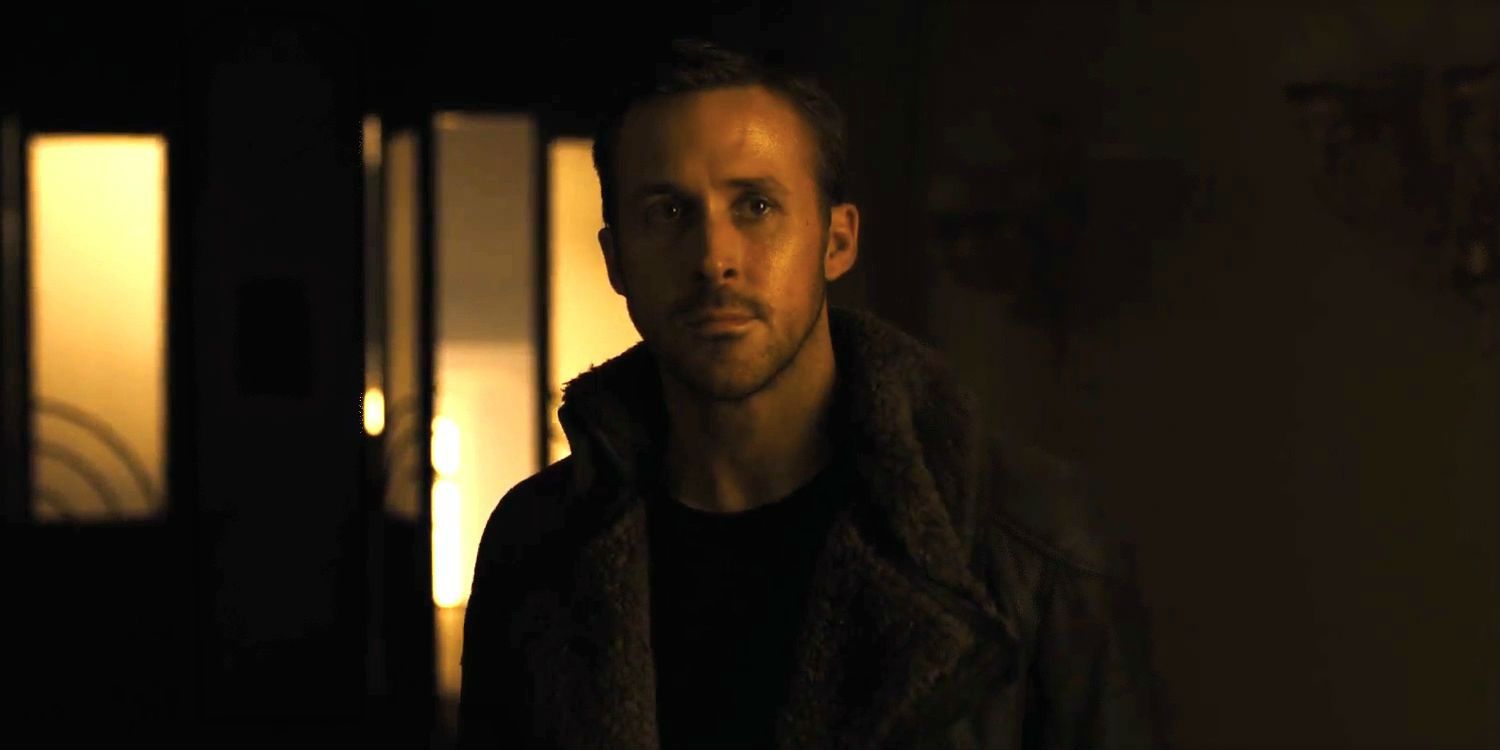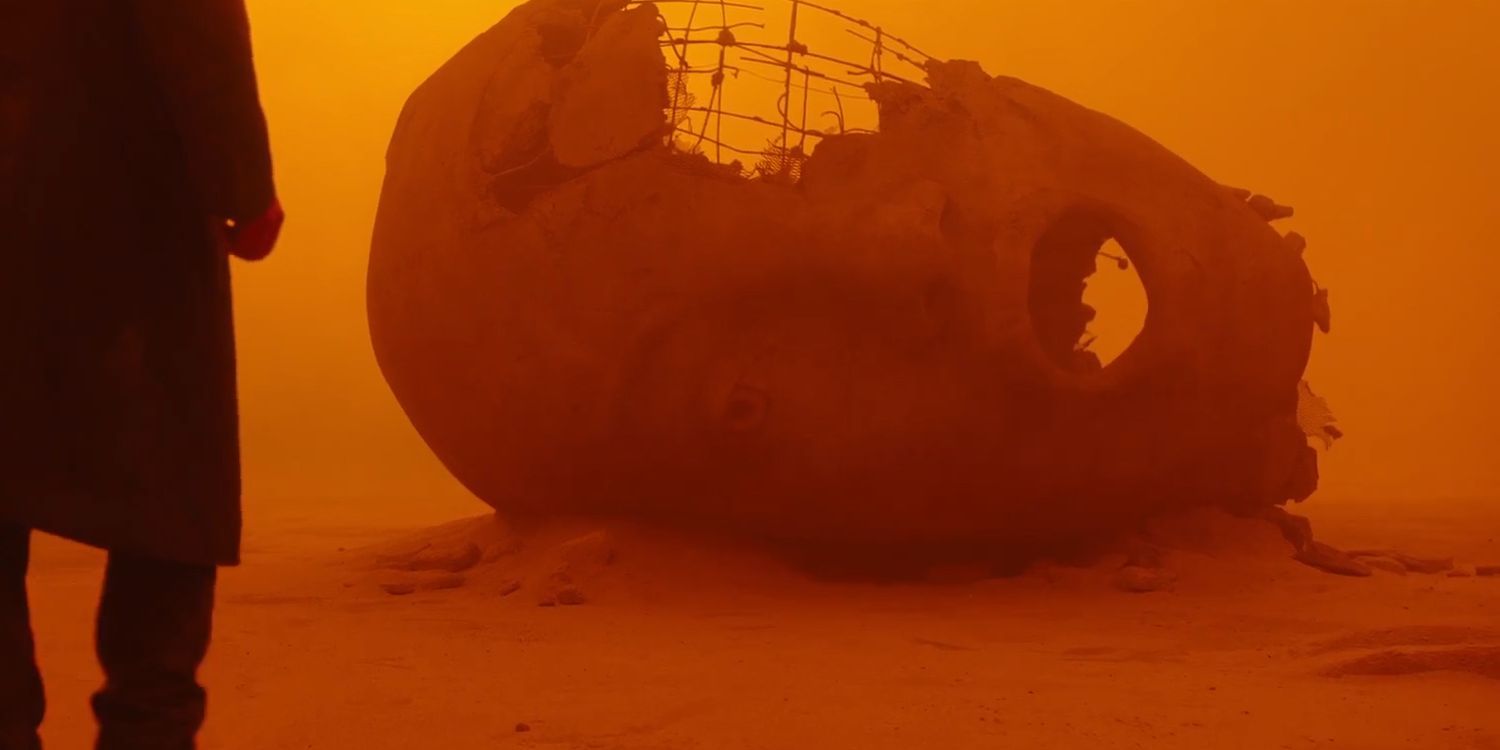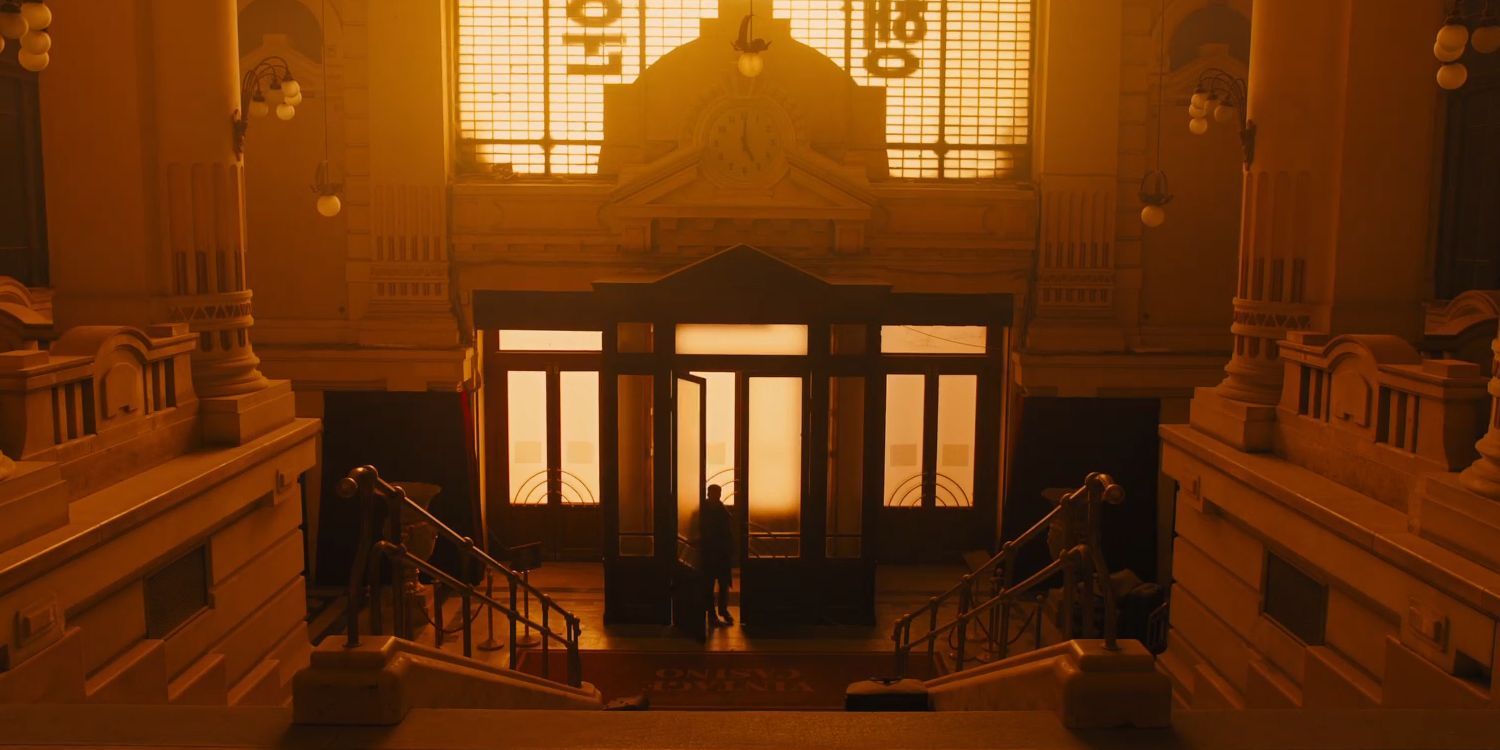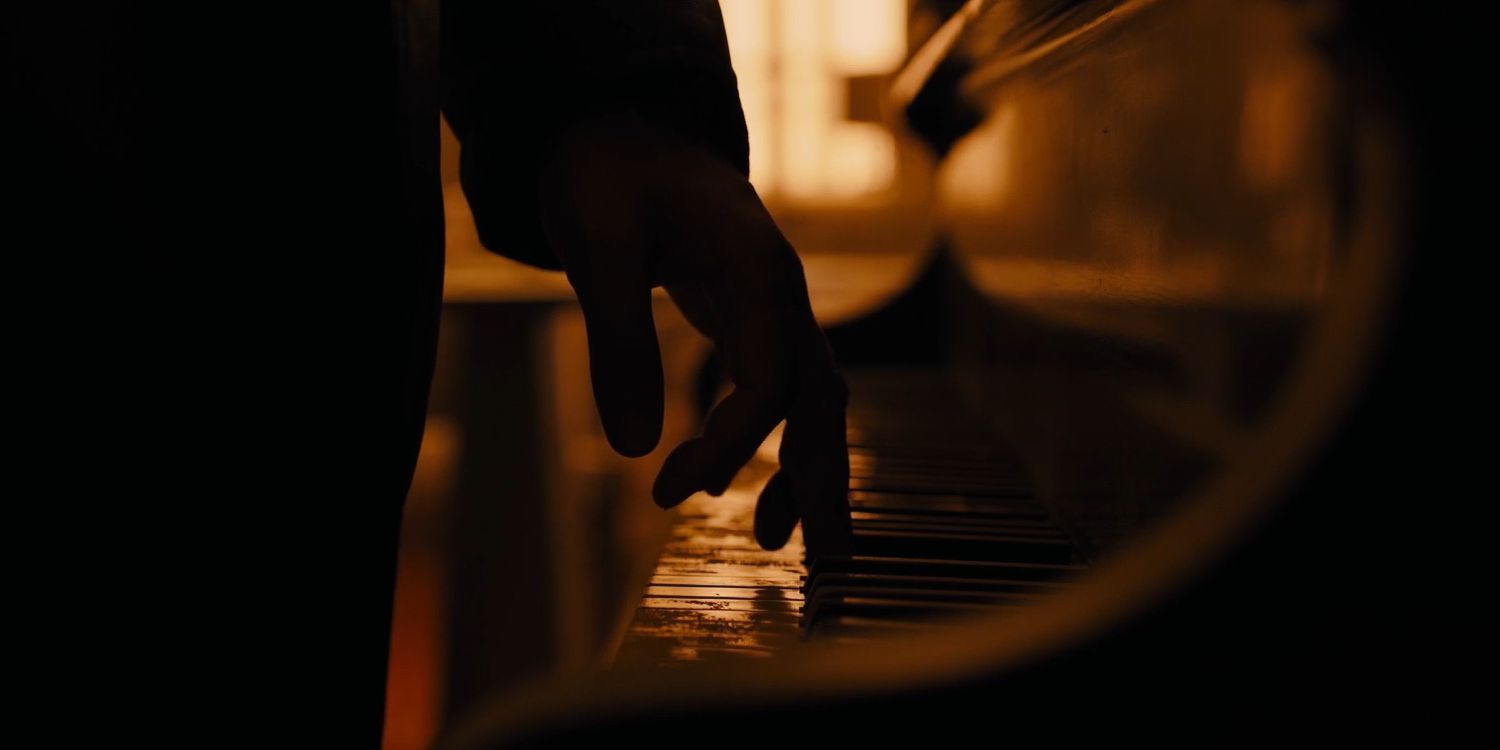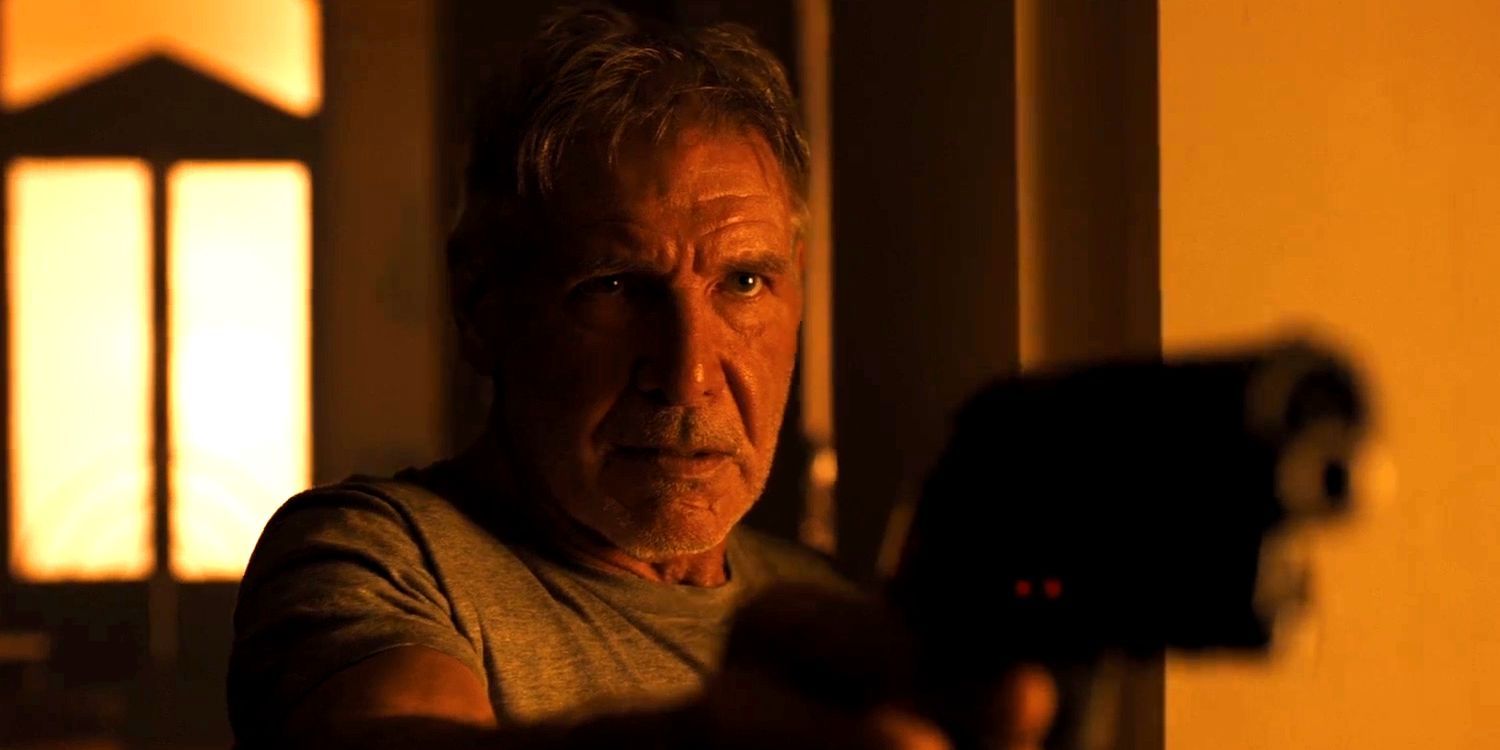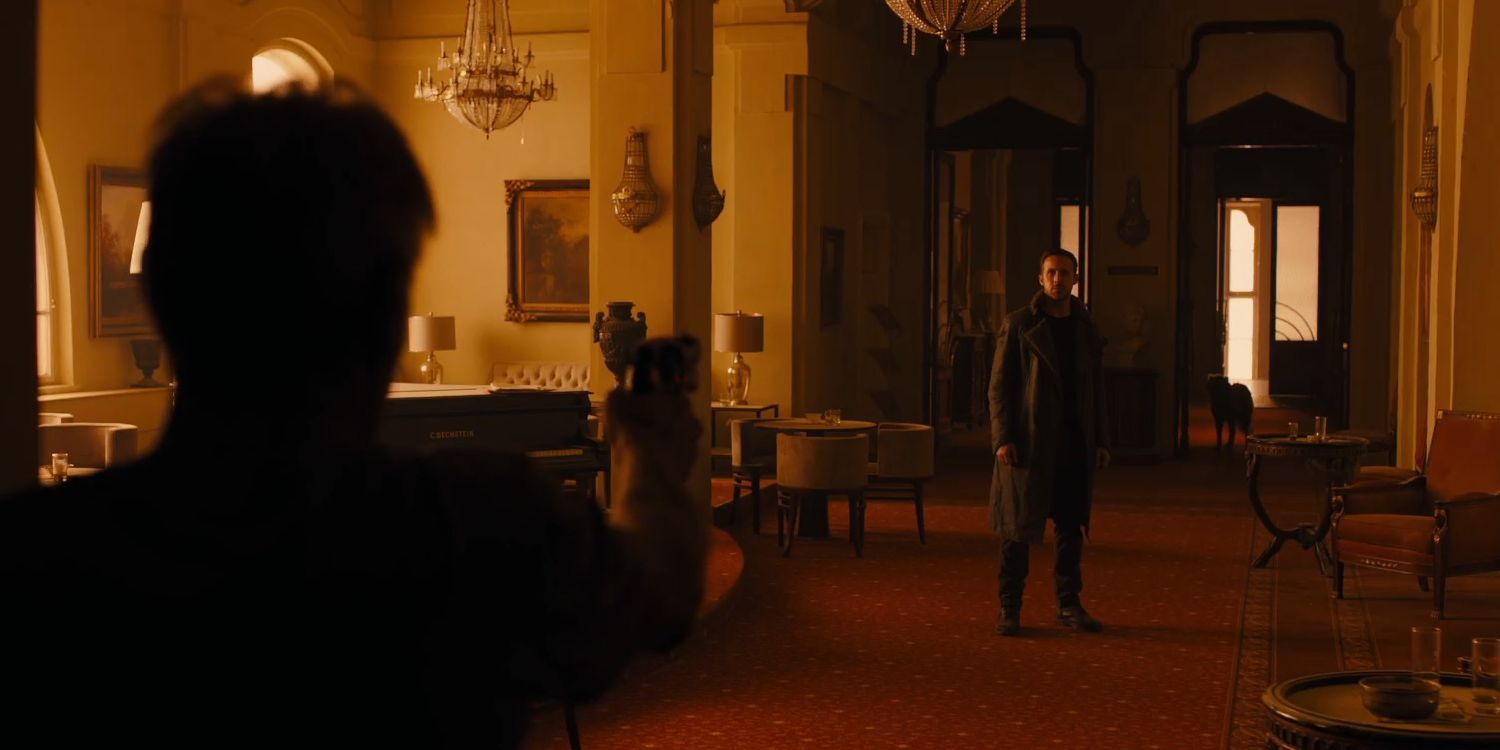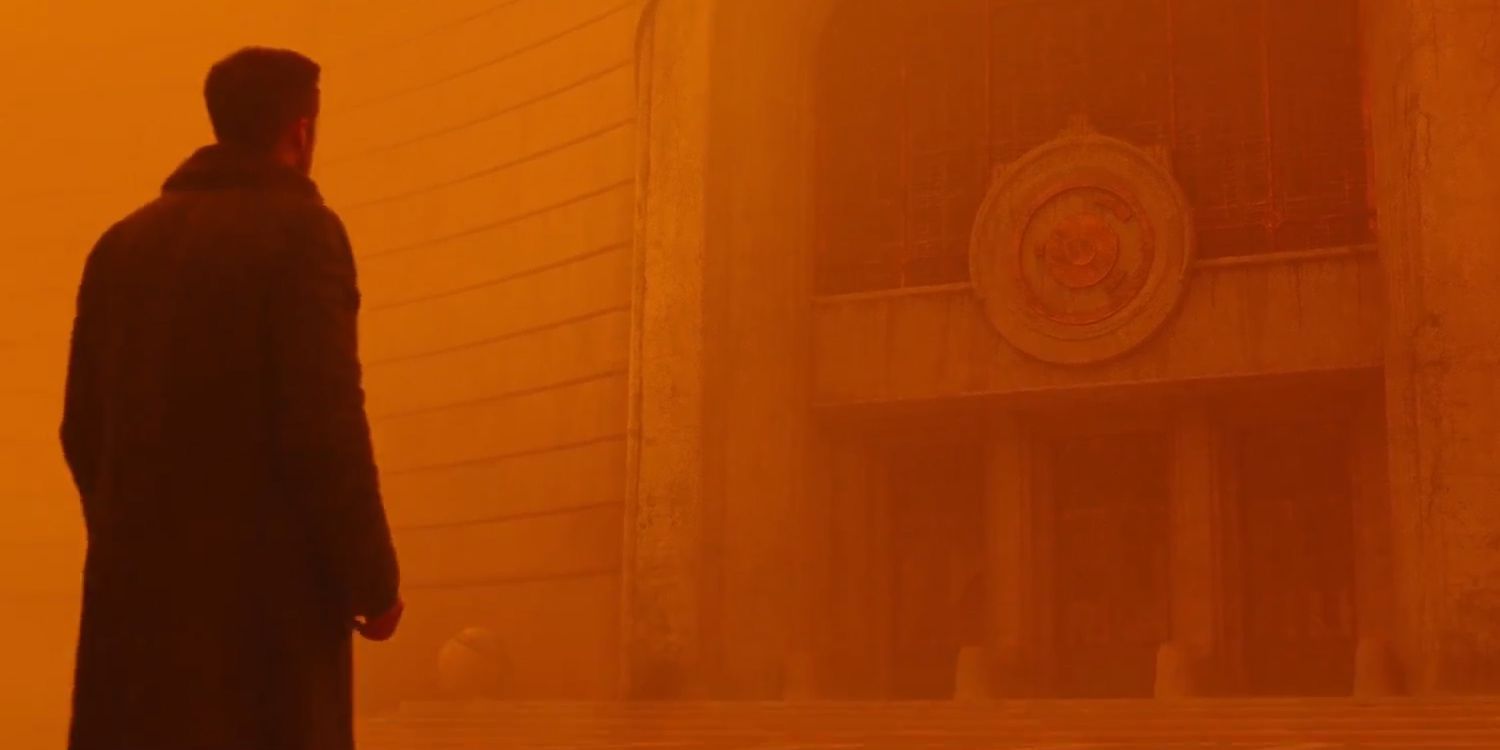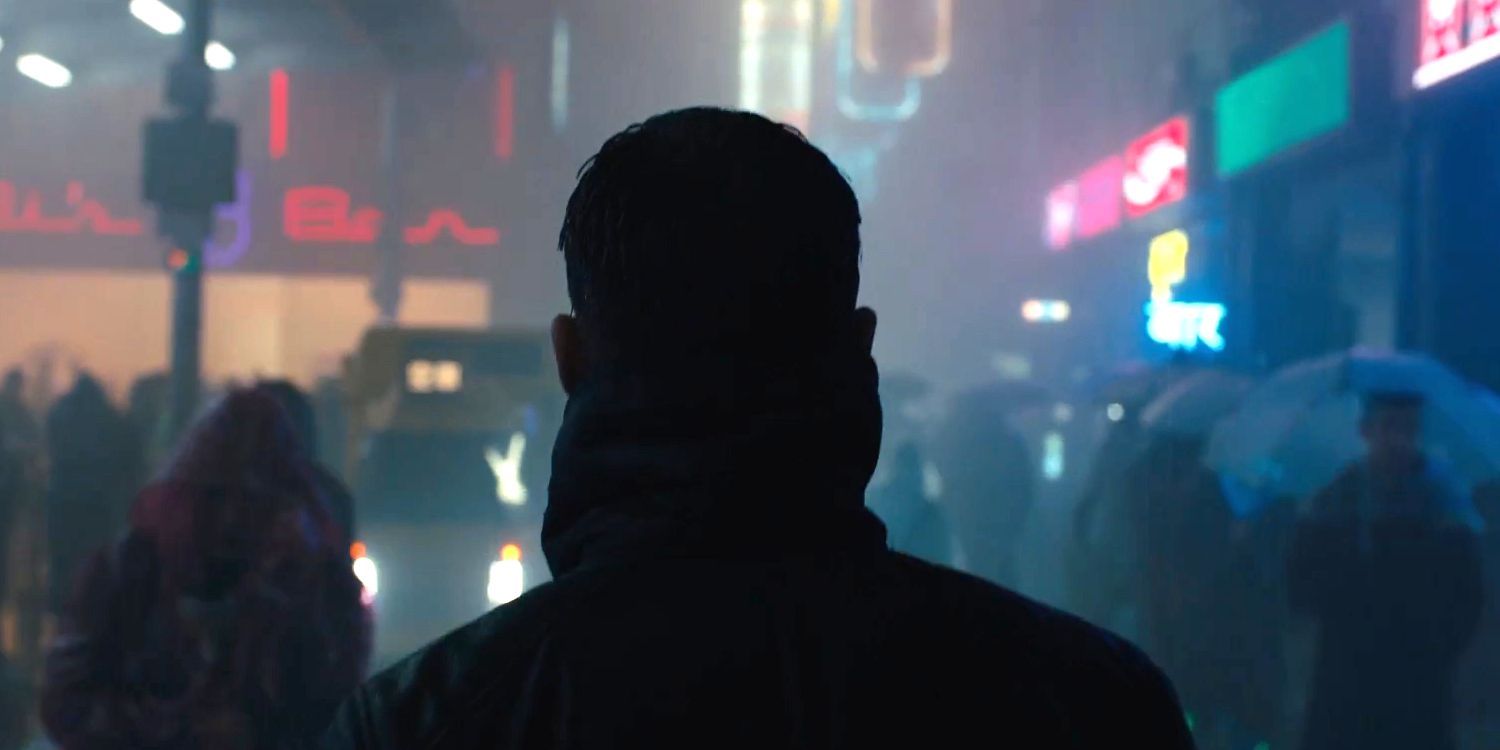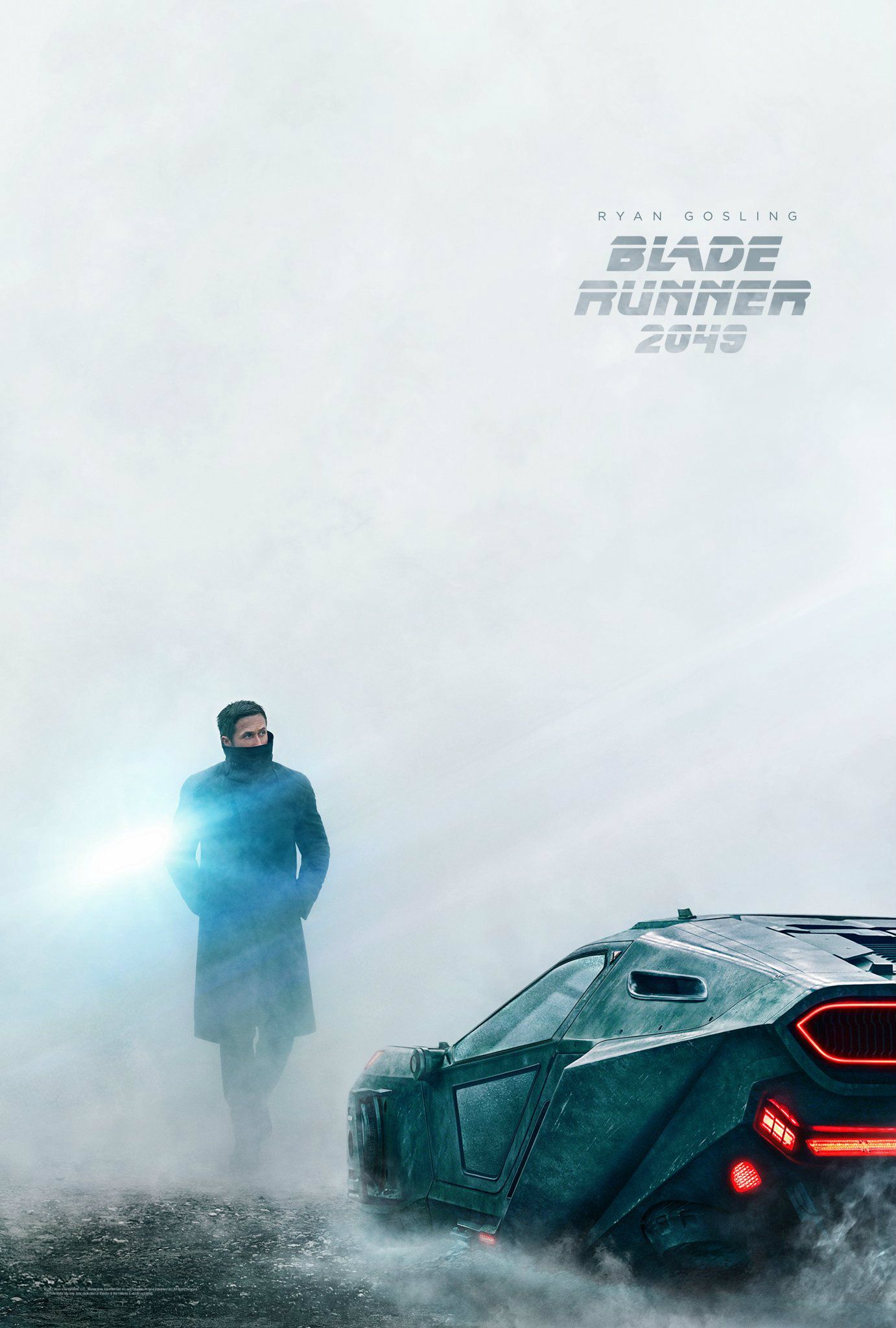Talk about an early Christmas present. The end of 2016 has been overflowing with trailers for all of next year’s biggest movies - the highlights have been Guardians of the Galaxy Vol. 2, Spider-Man: Homecoming, War for the Planet of the Apes and Dunkirk - but it’s clearly saved the best for last, with the first look at long-gestating sequel Blade Runner 2049 finally making its bow.
And what a teaser! It’s restrained, jaw-droppingly beautiful and all about atmosphere and tone. In other words, it’s typically Blade Runner.
Earlier today we got a plot synopsis that goes some way to contextualizing what we’ve just seen, but there's a lot more hidden in there. Let's break it all down and get an idea of what director Denis Villeneuve has in store for fans of Ridley Scott's 1982 original on October 6th, 2017.
2049 L.A. Looks Bleaker
The trailer opens with a shot of 2049 L.A. that, while boasting some familiar Blade Runner elements (there’s a bright moving advertisement in the top right and spotlights moving across the ground from flying cars above) presents a more alien city.
Most notable is the switch from constant rainfall to snow (or at least what appears to be snow); a thin film covers the ground, with tall industrial machines clearing a path for pedestrians and cyclists. It creates an altogether bleaker, colder and crucially more unwelcoming future (and the original film was hardly sunshine and rainbows), and immediately establishes 2049 as a very different setting to the original's 2019. The plot synopsis talked about “what’s left of society”, and this landscape, an evolution of what we saw in 1982, fits with the notion of a world on the brink.
Beyond its world expansion, the shot serves as an impressive show of the production's visuals, with what appear to be real machines blending into CGI backgrounds (and, possibly, snow) seamlessly, all best framing the introduction of our protagonist.
Reusing an Original Line
Over the L.A. shot we hear "Replicants are like any other machine, they’re either a benefit or a hazard. If they’re a benefit it’s not my problem," one of Deckard's (Harrison Ford) lines lifted from the original film, with added pauses between the clauses to remove the conversational tone of the initial delivery and put focus on the benefit/hazard dichotomy.
Blade Runner is full of iconic lines that both relate to the film’s unique sci-fi world and the wider themes of what it is to be alive, any of which would have been perfect to provide context for a sequel trailer. That they ultimately went with this is thus rather revealing: not only establishing the ideology of a blade runner, but pointing towards the film giving audiences a better taste of the wider use of replicants, something only hinted at in Scott’s original film.
The only replicants we see in the 1982 movie are the rogue four that Deckard must hunt down, and Rachael, a specially-designed version from the Tyrell corporation. Any examples of the beings in their normal use - the repeatedly hinted off-world work camps - is unseen. With several characters who are most likely playing replicants in the sequel - Dave Bautista for sure, and likely Jared Leto - we’ll hopefully see this aspect of the world expanded.
Ryan Gosling As K
As revealed in the official synopsis, Ryan Gosling’s lead character is blade runner K, who discovers a dark secret and goes on a self-motivated mission to find the missing Deckard. We don't learn much more beyond this about K in the trailer, but there's some serious parallels with Deckard mounting up; contextually Gosling is only a few years younger than Ford was in 1982 for starters, but he's also playing a regular replicant-hunting cop who finds himself on a dangerous new adventure sporting a similar stoicism and wearing variations on the same clothing.
His name, meanwhile, is a reference to author Philip K. Dick, who wrote the book on which Blade Runner was based, Do Androids Dream of Electric Sheep? There’s something cliche future about a one-lettered name, but it does work with the series' themes of living; it removes a layer of identity from K (and could make a replicant twist with the character that bit easier to pull off).
Beyond L.A.
Blade Runner was set entirely within the confines of 2019 L.A., a mega-city made up of hellish landscapes, towering buildings and dwarfing advertisements viewed from a scummy street level. Some early versions of the film did feature an epilogue set beyond the city limits, showing Deckard and Rachael escaping into rolling green hills, but this optimistic ending was dropped in 1992's Director's Cut and is now regarded as an alternate ending.
Regardless of the green hills' canonicity, by 2049 the land outside the city has become a lot less welcoming. Most of the trailer would appear to be set beyond L.A., with K traversing a vast desert expanse coated in orange mist in search of Deckard. It’s in stark contrast to the snow-covered L.A., highlighting the extent of K’s journey and perhaps further elaborating on the turmoil the world is in; Dick’s story was set in world where an irradiated atmosphere and dust storms had forced most of humanity off-world, and it’s possible Villeneuve's gone back to the source for his new locations.
The Big Head
The expanse would appears to be the remnants of a previously man-made landscape, rather than a simple uninhabited desert, with the sand littered by debris that point towards some sort of cataclysmic event.
What really stands out in the expanse is a giant, open-mouthed head, its concrete skull smashed away to reveal the inner mesh. It’s an instantly striking image, making the barren land K’s found himself in even more unsettling, and further conjures up the sense of a destroyed civilisation; a la Lost’s giant foot, there’s the disconcerting feeling knowing there was a much bigger original structure. In the movie itself this is probably there just to provide a moment of weirdness and convey K’s isolation, rather than being a pivotal plot point, and based on the trailer it'll certainly succeed at that.
By this point it should go without saying that Roger Deakins cinematography here is nothing short of masterful - each and every shot in the trailer is so perfectly constructed it's basically a work of art.
Deckard's Hideaway
In the middle of the mist is a giant building that appears to be where K finds Deckard. Before diving into it in more detail, it’s worth noting that the exterior and interior shots in the trailer show two different locations - the windows on the inside aren’t reflected on the outside, so it’s possible we’re actually seeing two different parts of the film. That said, they both take place in the same, orange-hued backdrop, so are linked somehow.
The outside building uses a futuristic design and is flanked by other towers reminiscent of the architecture of the main Tyrell building from the original, suggesting K's going into the past of the replicant's creators.
Inside, things are more classical, with grand architecture that feels antiquated by even modern standards - massive pillars, hanging paintings and Victorian trappings. In fact, the entrance mat reveals that the building was once the "Vintage Casino", making the whole thing intentionally anachronistic (and pretty fitting of Deckard's begrudging approach to technology in the original film).
The Piano is a Major Callback
In the hideaway, K finds a piano covered in dust from lack of use. This is an essential callback to one of the most hotly debated moments in Blade Runner, and with it the film's defining mystery.
For the Director’s Cut, Ridley Scott reinserted a dream sequence Deckard has when sat at his piano, of a unicorn running through a forest. Mysterious and befitting of the film’s lucid flow, it subtly reframed the ending; when Deckard finds a origami unicorn from retired blade runner and all-round cynic Gaff, it suggests that - in having his dreams seen by others - he is actually a replicant.
Moreso than anything we’ll see, this reference being so prominent in such a short trailer is a pretty blatant clue that, while the producers have said the film may not provide an answer, Deckard’s true nature will still be a prevalent question in the film.
Harrison Ford Returns As Deckard
“I did your job once. I was good at it,” says Deckard from the shadows, coming out to confront K, blaster in hand. This is Harrison Ford reprising his second iconic role this decade (with a third, Indiana Jones, coming in 2019) and he looks pretty much as you’d expect - a recluse removed of his blade running ephemera and slightly shaky with a gun (which is, fittingly, the same standard issue weapon he used in 2019).
What this says about the "Deckard is a replicant" theory is entirely up to you at this point; ageing would seem to point towards him being a human, but if Deckard was a replicant with no set expiration date then he would conceivably grow old as if he were alive.
Beyond the character's look, his brief dialogue snippet is a neat allusion to the title, although the reference to “your job” could be more loaded than it seems; it's said with more confidence and interest than the Deckard we know from the original, so there's definitely some change to his stoic personality or a deeper meaning to what's being said. What makes grasping its true meaning even harder is the fact we don’t see Ford actually say the line in the trailer; it may be a case of slippery editing taking part of a later discussion.
Simpler Times
“Things were simpler then,” say K. The whole trailer is built around showing how far from the original Blade Runner the sequel is in just about every way - music, visuals, story - and this pretty much crystallizes it. Something has happened, be that the discovery that led K to look for Deckard are a more seismic event (probably the latter given how damaged the world appears to be) to make the world of 2049 be so intrinsically different to the one of 2019 that it's worthy of being put in the title.
As mentioned earlier, this may put us in the post-World War Terminus setting of Dick’s book, which always felt more dystopic than the film it spawned. That core pitch would certainly be enough reason to justify going back to the world of such a lauded classic, with pre-written world-expansion, and promises 2049 will feel distinct from what came before. No doubt elaboration on what exactly made things less simple will come over the next few months.
The Music Fits The Style Perfectly
Vangelis’ score is an essential part of establishing Blade Runner’s mood, merging classic-style songs (One More Kiss, Dear) and jazz (Love Theme) with 1980s techno to create a hauntingly perfect audio representation of Scott’s cinematic vision.
Previous Villeneuve collaborator Jóhann Jóhannsson (he worked with the director on Prisoners, Sicario and Arrival) is providing the music this time, and there appears to be a hint at some of his work in the trailer. Ignoring the expected trailer ebb and flows (boom: cut to new location), it’s very much an evolution of Vangelis’ work - many of the same sounds and instruments feature, but there’s some added scale some of the cues, which hopefully means there won't be much resting on the past.
Needless to say, it’s definitely worth giving the trailer another watch to specifically take all the sounds in.
Back to the Original - K In L.A.
After so much that's new and different, the trailer ends with an air of familiarity. The title is a 3D replica of the original logo, with the music playing over it the closest Jóhannsson gets to straight-up replicating Vangelis, then there's a final shot that could very easily be straight out of Scott's film; we see K wearing a typical blade runner coat walking through a rainy L.A. street full of zanily dressed pedestrians and stocky cleaning vehicles before looking over his shoulder.
This shot may seem to undo much of the previous 90 seconds work in making 2049 look like a distinct experience, but it really serves as a final grounding note; a show that while he's taking the story in an brand new direction, Villenuve is more than capable of creating some pure Blade Runner imagery.

